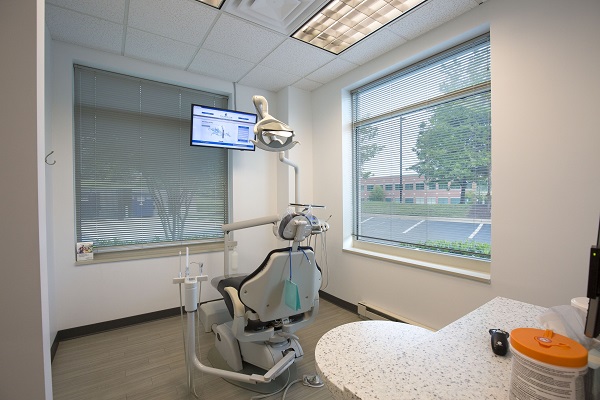Does It Hurt to Get Dental Crowns?

Dental crowns are one of the most common procedures done by a general dentist. The crown itself can significantly improve a person’s oral health, which is why so many patients opt for them when in need of restoration or replacement.
Having crowns placed is a relatively simple procedure, but for some patients, it may be frightening, which is normal! In this article, we discuss dental crown placement. We go over whether they hurt, as well as what patients can expect from the procedure.
Does it hurt to get dental crowns?
Many patients wonder whether dental crowns can cause pain. Find out more below!
Discomfort
When dental crowns are placed, there is not a great deal of pain. However, there is a certain amount of discomfort that can be caused after the procedure. This is normal and should be expected.
During a dental crown placement, the infected areas of the teeth are removed through dental drilling. The dental drilling is typically what causes discomfort and is actually a good sign. This means that the roots of the tooth are now exposed due to the infected areas being removed. Once exposed, the dental crown is placed right on top to seal off the tooth and put the infection to a halt.
Although the patient is numbed for dental crown placement, there may be discomfort afterward. It has been said that there can be feelings of tenderness and soreness. Most general dentists recommend that over-the-counter pain medications be taken for a day or so after the procedure to help remedy any discomfort.
Gum soreness
Patients also may experience soreness along their gum line after a dental crown is placed, which is completely normal. Gum soreness is caused by the crown being placed on top of the tooth. The edges of the crown may run into the gums and cause inflammation or swelling during and after the crown procedure.
Soreness can be remedied with the use of ice packs, cold compresses and over-the-counter pain medications. Any soreness along the gum lines should not last longer than a day.
Expectations
It is important to have prior knowledge of dental crowns ahead of time so there are no surprises. The procedure itself is relatively simple, but being aware of each step may be helpful.
The dentist will have a custom-created dental crown ready for the procedure. After drilling out decayed areas, the tooth will be cleaned and prepared for the crown placement. Dental cement will be applied to the tooth so the crown stays in place. The dentist places the crown and makes any necessary adjustments to shape, size and smoothness around the edges.
Contact us today!
If you have questions about dental crown placement, then reach out to our office so we can help you. Our team of general dentists can discuss the procedure so you know what to expect. Please do give us a call or stop by today!
Are you considering dental crowns in the Sterling area? Get more information at https://www.titandentalcare.com.
Check out what others are saying about our services on Yelp: Read our Yelp reviews.
Related Posts
A dental crown usually lasts for many years. But it can become loose or fall out before it is supposed to be replaced. If your dental crown becomes dislodged or falls out, it is crucial to know how to handle the situation. Read on to find out what to do if your crown falls out.A…
When someone has had a root canal, people usually think of a dental crown as the next procedure. During a root canal, the dentist first drills a tiny hole in the tooth's surface. The infected pulp is then removed, and the inner layer of the tooth is cleaned to remove any residue. Finally, the dentist…
Dental crowns, also known as dental caps, are options that restore the strength, form, and size of teeth by covering them. Crowns can be placed the same day, or the dentist can complete the procedure over multiple appointments. If your dentist has suggested that you should get a dental crown, here are few helpful hints…
The cosmetic appeal of dental crowns rests on their ability to sheathe natural teeth. A dental crown is also a custom restoration, meaning that it fits the underlying tooth like a glove. It covers the visible part of the tooth, from the biting surface to the base.These qualities make a dental cap one of the…


